Dating back centuries, it's one of Siena's most important traditions and thousands of locals and tourists gather in the central piazza to watch it unfold.
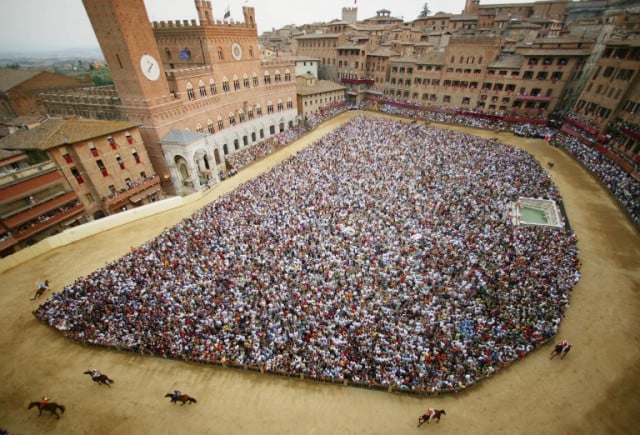
Photo: Vincenzo Pinto/AFP
The first of this year's races – known as the Palio of Provenzano in honour of the Madonna of Provenzano, an icon kept in a local church – takes place on the evening of July 2nd.
There's a second on August 16th, as well as a series of trial runs in the days leading up to each race.
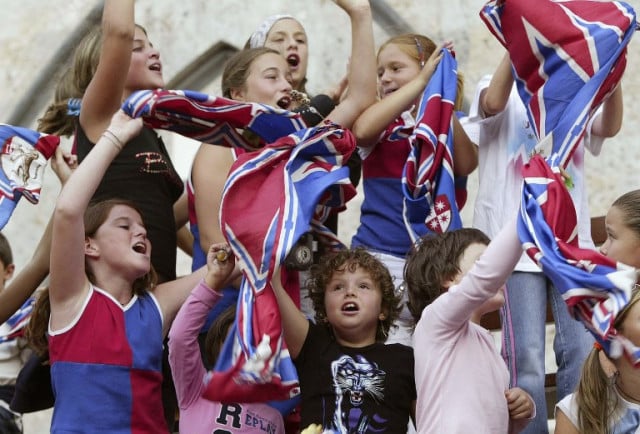
Children cheer their local district. Photo: Nico Casamassima/AFP
For the Siennese, the contest is a chance to celebrate local pride and honour the city's long history.
But the event isn't without its controversy, and city authorities have passed regulations aimed at ensuring the animals' wellbeing after campaigners criticized the fact several horses have died in the race over the years.
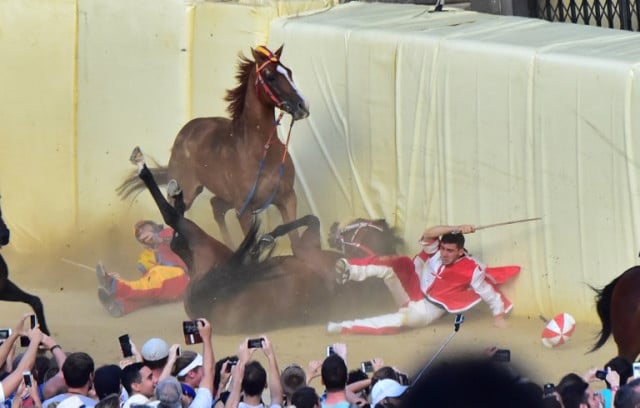
A collision in July 2016. Photo: Giuseppe Cacace/AFP
The successor to earlier races run on different courses or on buffalo and donkeys, the Palio as we know it today first took place in 1633. Many of the traditions established in its earliest years still remain in place.
The day begins with a final trial, known as the 'provaccia', that takes place on the morning of the race.
Horses and riders then receive a blessing from their local priest, who concludes with the traditional commendation: “Go, and return victorious!”
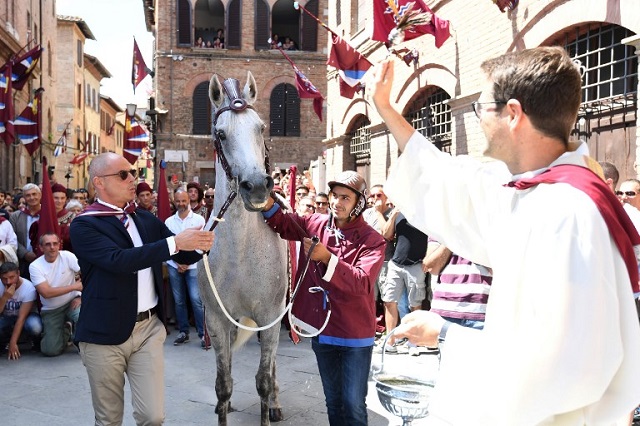
Blessing a horse and its rider. Photo: Claudio Giovannini/AFP
The afternoon sees a costumed parade through the city centre, with participants carrying flags showing the symbol of their district or 'contrada'.
Each one is named for an animal or symbol and has its own colours, as well its historic allies and rivals among the other contrade.
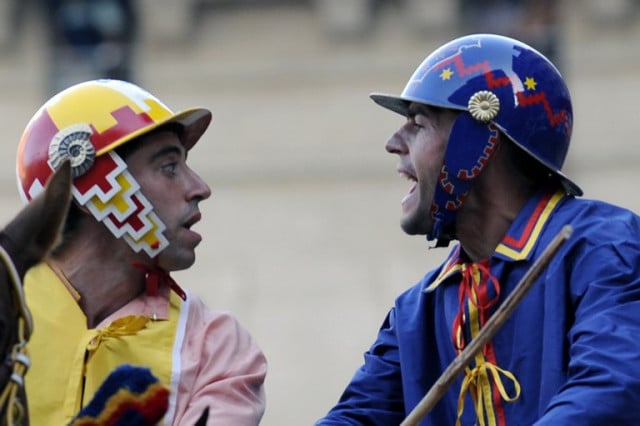 Photo: Giuseppe Cacace/AFP
Photo: Giuseppe Cacace/AFP
Only ten of the city's 17 districts take part, according to a limit imposed in the 18th century to reduce the number of accidents. The seven which didn't participate the previous year automatically get a spot, with the remaining three chosen by drawing lots.
There is huge rivalry between the districts, and the district that goes the longest time without a victory gets the moniker 'nonna' (grandma).
The parade, or Corteo Storico, includes around 600 people dressed in medieval costume, from musicians to flag-bearers known as 'alfieri'.
The procession leads spectators to the impressive Piazza del Campo where the race takes place.
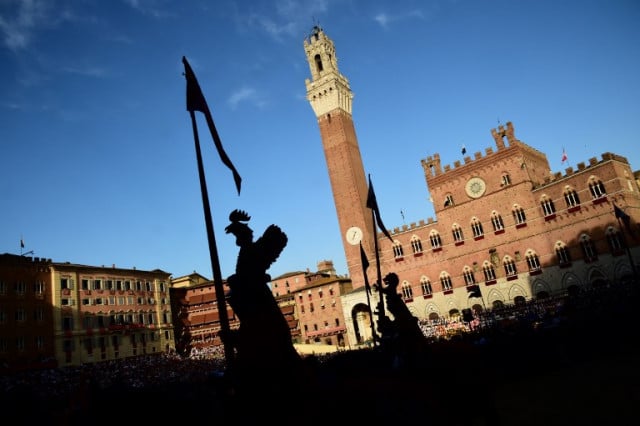
Arriving in Piazza del Campo. Photo: Giuseppe Cacace/AFP
After a signal is sounded around 7:30 pm, nine of the ten horses line up behind a rope and wait for the final horse, selected at random and called the rincorsa, to gallop into the starting area – the cue for a starter to pull the rope away and begin the race.
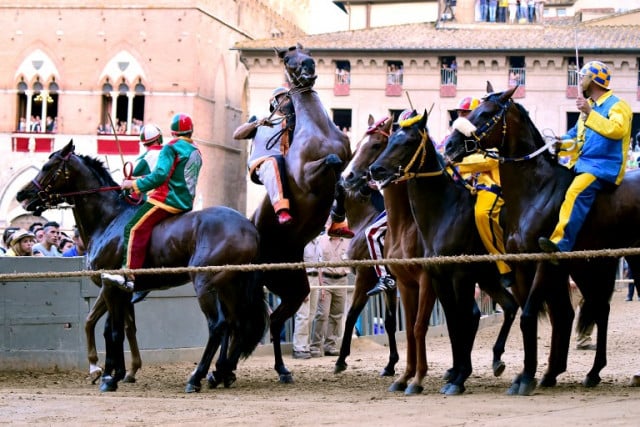
The horses prepare to start. Photo: Giuseppe Cacace/AFP
The competitors must run three laps around the sloping medieval square, which is covered with earth and protected with crash barriers for the occasion.
The winner is the first horse to cross the finish line – with or without its rider, who may well fall off.
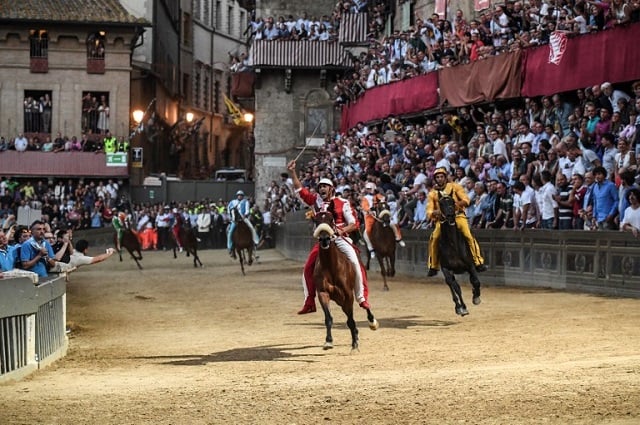
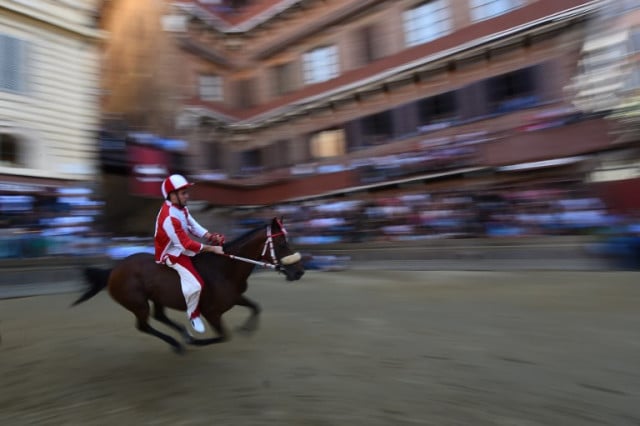
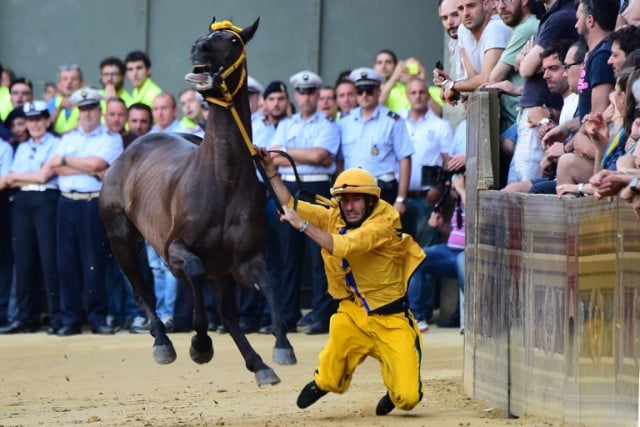 Photos: Claudio Giovannini, Giuseppe Cacace/AFP
Photos: Claudio Giovannini, Giuseppe Cacace/AFP
The jockeys each carry a long whip, which they are allowed to use not only to encourage their own horse, but also to distract or jostle other riders and their horses.
After all the anticipation the race is over very quickly, rarely lasting longer than a minute and a half.
Immediately afterwards comes the awarding of the prize that gives the race its name: a palio, or banner, usually decorated by a local artist.
The victory is a huge source of pride for the winning contrada.
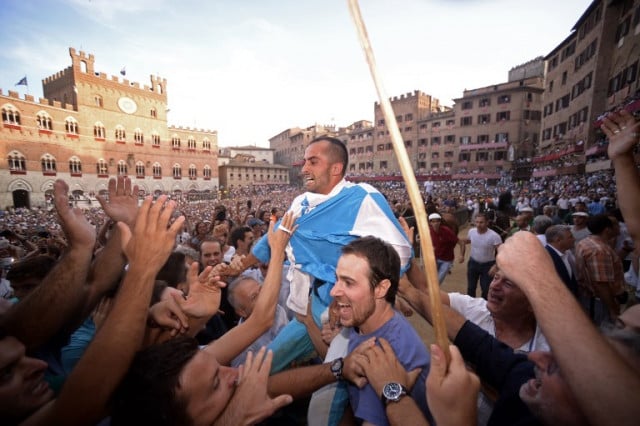 The Onda district celebrates its victory in the August 2017 Palio. Photo: Filippo Monteforte/AFP
The Onda district celebrates its victory in the August 2017 Palio. Photo: Filippo Monteforte/AFP
The celebrations conclude with a hymn of thanksgiving at the nearby church of Santa Maria in Provenzano.
There are further festivities in the autumn, when the winning contrada hosts a victory dinner at which its champion horse is the guest of honour.
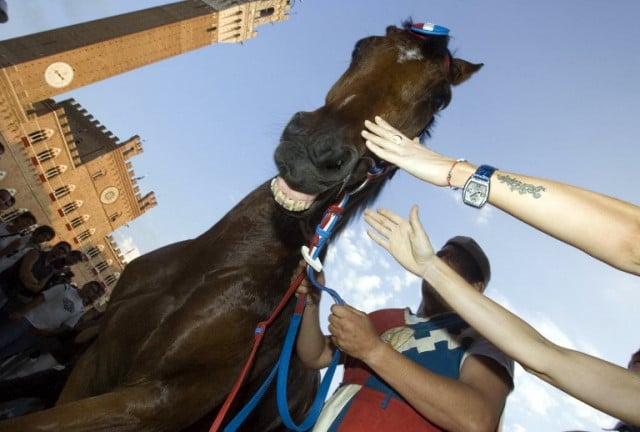
The Pantera district won the Palio with its horse Choci in July 2006. Photo: Roberto Carli/AFP
READ ALSO:

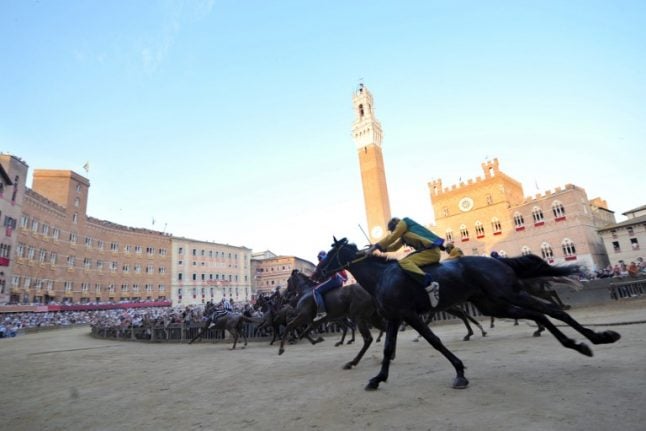

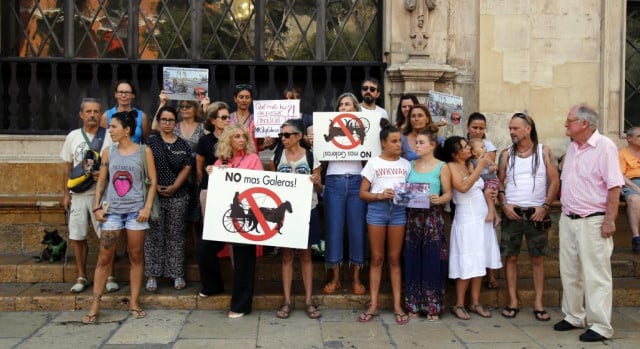
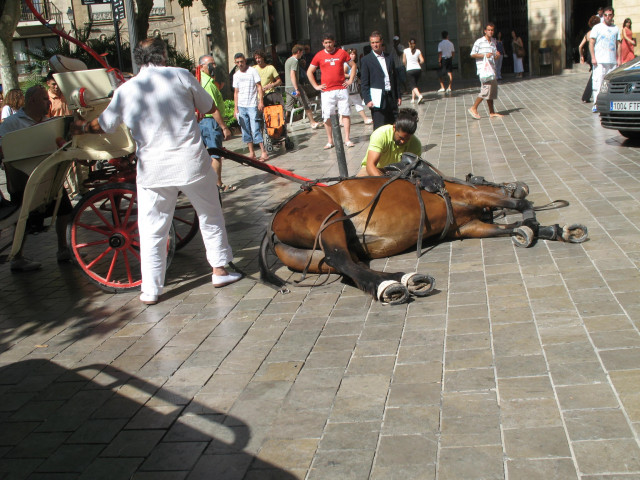
 Please whitelist us to continue reading.
Please whitelist us to continue reading.